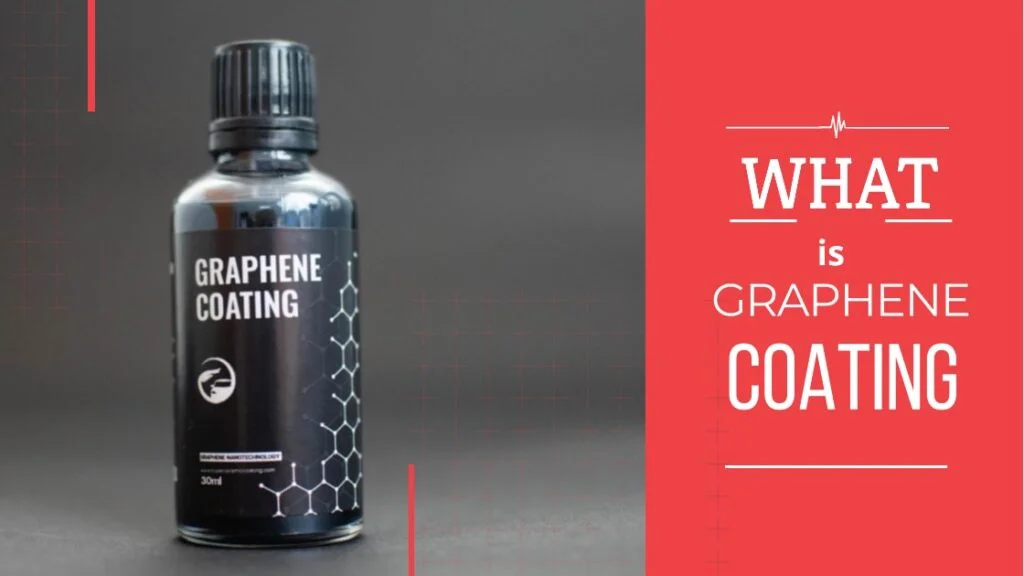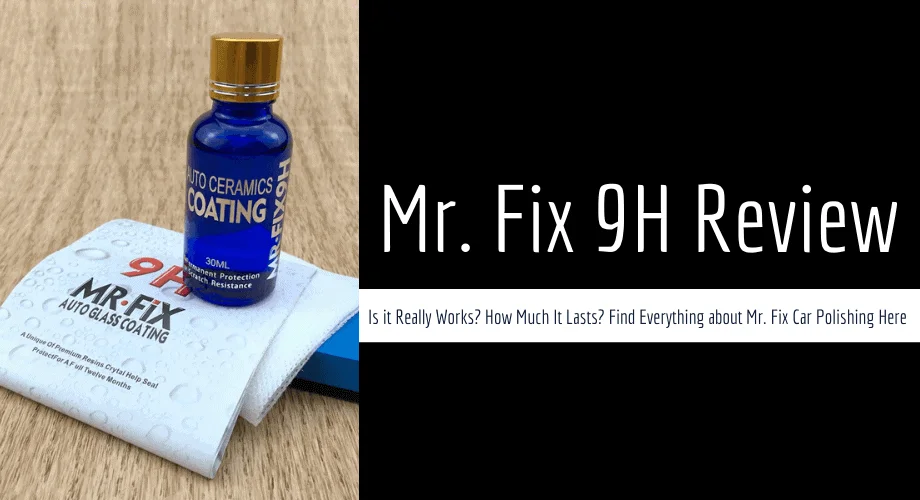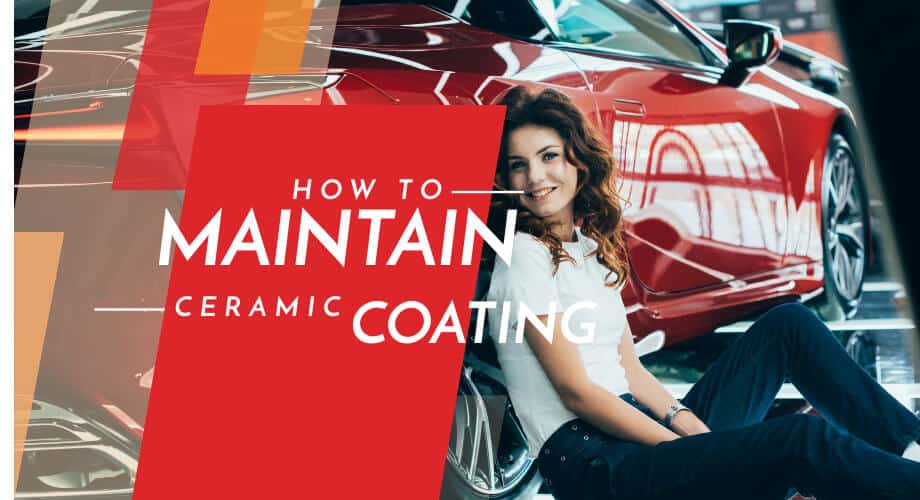Graphene coatings are considered the newest innovations to emerge in the automobile industry. However, Graphene is a carbon-based material that is not really new. Graphene comprising one layer of carbon atoms, is praised as the sturdiest material known to exist on earth. It is 200 times more rigid than steel and lighter than paper. Two things account for this strength. Today, Graphene is increasingly getting accepted among detailers due to its hardness and ‘anti-static properties. Furthermore, it does not allow the dust to settle down on the surface coated with it because of its anti-static properties.
Benefits of Graphene Coating
- Exceptional Water-Repelling Capabilities: Setting a new standard for hydrophobic properties, the coating impressively repels water and surface contaminants.
- Reliable and Proven Effectiveness: Gaining the trust of professional car detailers globally, this product comes with a robust guarantee of satisfaction, underscoring its proven performance.
- Long-Lasting Protection: Offering robust protection that lasts over five years, it significantly surpasses traditional products in durability.
- Enhances Visual Appeal with a Lustrous Finish: The coating not only enhances the vehicle’s appearance with deep, captivating reflections but also leaves behind a smooth, satiny surface.
- Effortless, User-Friendly Application: Designed for an easy, do-it-yourself approach, the application process is simple and does not require special tools or extensive experience.
Advantages of Graphene Coating over Ceramic Coating
- Longer durability than ceramic coating: Ceramic coating for cars is sturdy protection, and its longevity has been one of the major reasons for its recognition in the industry. But it’s exciting to note that with the addition of Graphene, the durability could be further strengthened. Due to its 2-dimensional structure and honeycomb lattice, Graphene is thin, lightweight, and very strong. It allows unsurpassable durability to the surface coated with Graphene. Once applied, you can enjoy the glossy finish of 10 H hardness for 3-4 years. Your crystal shield coating will not wear down due to rain or shine.
- Ultra-high gloss, depth of colour: The nanoparticle Graphene layer leaves an attractively rich, deepened gloss that considerably enhances the shine and appearance of your paint.
- Better hydrophobic properties: Graphene has a higher contact angle because of its chemical composition and honeycomb structure, making water slide off easier on the surface than the conventional coating. Less water on the surface means less evaporation, which means no troublesome water spots staying behind your car’s bonnet.
- Less water spotting: As traditional ceramic coatings are notorious for retaining heat and increasing water spotting, combining them with Graphene makes the top layer of the coating more heat resistant. This ensures you do not have to waste money polishing water spots that have engraved themselves into your car’s surface.
- Repel Dust: Graphene enjoys privileges based on its chemical properties. To get a little technical, Graphene is said to be “anti-static,” considering its conductivity properties. This implies that it repels dust and other minute or microscopic particles and doesn’t allow them to settle down on the surface coated with it.
Order Graphene Coating
Is Graphene Coating better than Ceramic Coating?
You can attain relatively diverse outcomes from the same coffee maker by only changing the coffee beans. That is just the situation with nano-coatings. Graphene and ceramic coating use the same theory, but the finish outcome is considerably unlike. In comparison, both coatings provide fortification against water, UV rays, and grime, and graphene benefits from being the sturdiest substance on the planet. Additionally, it is one of the thinnest and credited to its “one atom” formation. Lighter and sturdier signifies that it can bond to any surface more effectively.
In terms of cost, Graphene is quite costly compared to ceramic coating. However, it is simple to use; Graphene coating does not solidify or crystallize as a regular ceramic, lowering the likelihood of irreparable high spots or streaking. We could think about ceramic coating as an improvement from the usual ceramic coating. Hence, at last, the question arises: Which coating is better? While comparing the benefits offered by both products, it is irrefutably clear that graphene ceramic coats have the advantage over conventional ceramic coatings.
However, graphene ceramic coating is a little pricier than conventional coatings; graphene ceramic coatings have superior properties and added benefits that give you worth for money in the upcoming years. They have better durability and also give generous fortification against scrapes because of superior flexibility. With a stylish coating of ultra-smooth graphene ceramic coating, your luxurious vehicle is certain to grab the attention of others.
How to Apply Graphene Coating?
Humidity and temperature play a big factor in “flash” time (the time between application and when the coating is ready to be wiped off). We recommend applying in temperatures between 65 and 75. Flash time would be expedited in high temperatures, so the first test applying a small section to determine workability before moving into the rest of the vehicle. Graphene coating could be applied to any painted, plastic, or glass surface (including windshield).
To ensure the optimal application of graphene coating, it is essential to meticulously prepare the vehicle’s surface. Here’s How:
- Initial Cleaning: Begin by thoroughly removing any loose dirt or surface contaminants. This includes cleaning off debris from the paint and fiber surfaces to create a clean base.
- Contaminant Removal with a Clay Bar: Utilize a clay bar to delicately extract any stubborn, embedded particles from the surface. This step is crucial to prevent any impurities from affecting the coating’s effectiveness.
- Surface Refinement: Address any visible paint imperfections such as scratches, swirl marks, or signs of oxidation by polishing or compounding the vehicle. Since Graphene Coating forms a semi-permanent layer, it’s vital to correct these defects beforehand, as they’ll be encapsulated beneath the coating.
- Elimination of Polish Residues: After polishing, it’s important to remove any residual polish oils or substances. A thorough wipe-down with Isopropyl Alcohol (IPA) ensures a clean surface, crucial for the coating’s adherence.
- Drying Hidden Moisture Spots: Check for and dry any moisture trapped in areas like panel gaps, around headlights, or taillights. This step is essential to prevent any water from seeping out and disrupting the coating’s curing process.
The Application Process
To ensure a successful application of Graphene Coating, strictly follow these steps:
- Preparation of the Coating: Vigorously shake the Graphene Coating bottle to ensure its contents are well-mixed.
- Applicator Saturation: Gently pour the Graphene Coating onto your applicator pad, ensuring it’s uniformly saturated but not overly drenched.
- Starting with Flat Surfaces: Begin with the horizontal or top sections of the vehicle. Apply the coating in straight, slightly overlapping strokes. Focus on manageable sections, roughly the size of a car door or half the hood, adjusting the area size based on the prevailing humidity and temperature.
- Smooth Application Technique: Ensure the applicator moves smoothly across the surface. If you notice dragging or uneven application, replenish the applicator with more coating.
- Observing the Bonding Process: Shortly after application, a ‘Rainbow Effect’ will appear, more noticeable on darker colors. This effect, transitioning to a fog-like haze within 1 to 3 minutes, indicates the coating is ready for removal. Note that environmental conditions can affect this timing, so it’s advisable to test a small section first.
- Residue Removal: Employ high-quality microfiber towels for residue removal. The first pass should eliminate about 80% of the residue, with the second pass clearing the remaining 20%. Use gentle, circular motions with minimal pressure.
- Inspection for Excess Coating: After wiping, inspect adjacent areas for any overspread of the coating. A flashlight or phone light can be helpful for this. If residue is left unattended for too long, it may cure into a noticeable spot, potentially requiring polishing to remove.
- Proceeding to Other Areas: Continue this process across the vehicle, treating paint, trim, plastics, and glass in the same manner. Allow at least an hour between layers if adding multiple coats.
- Drying and Curing Time: Once coated, let the vehicle dry undisturbed for at least 48 hours. The coating continues to cure over approximately 5 days. While it’s okay to drive the car during this period, avoid exposing it to water for optimal curing.
Order Graphene Coating
Frequently Asked Questions
Graphene coating could be maintained by using any pH-neutral wash soap or water-less cleaner. We suggest utilizing our Ceramic Shampoo as it is intended to clean and condition the coatings to finish to maintain the astoundingly higher shine and water-repellence effects. For top or in-between washes, you could apply our detail spray, which is harmless on any coating, or for high performance, apply Ethos Defy for better shine, gloss, and guard between washes.
The answer is “Yes”. We suggest an application of Graphene coating on top of any brand of PPF owing to its shielding and augmentation abilities. Since Coating provides a flexible member, it would not slow down the ability of PPF to self-recover or defy the effects of road wreckage. Moreover, it would add a clearly shiny and slick finish which is fully sealed from the elements, lowering the odds of early ageing and yellowing.
A lot of available ceramic coatings contain Silicone Dioxide, which is generally known as Silica, also called glass or sand. Graphene was founded in 2004 and won a Nobel prize in 2010 because of its amazing features that have proved to be 100 times sturdier than steel when staying supple and unbreakable. Graphene Coating uses this novel technology to create a formula which takes ceramic coatings to a great height, making them simple to use when giving extra perks and results.
The short reply is yes. We suggest using two layers for the best performance and longevity. A double layer guarantees zero low or uneven spots in the coating and that the surface has an appropriate covering. There is no extra advantage to using over two layers on any surface. If you want to layer the coat, wait for at least an hour between the first and second layers.
Graphene needs the paint is fully free and clear of impurities or other kinds of layering. Its chemistry is made to function closely with the surface and get rid of anything over it to be a solitary resolution.
The complete cure period of the Graphene Coating is around 5 days. It signifies that we don’t suggest cleaning your car with any cleaners before finishing this period. Your car is secure for driving right away, but we suggest keeping your vehicle away from water for the initial 2 days.
Of course, you can use graphene coating on wheels. We advise applying two layers for max performance and durability. Two layers ensure that there are no rough or low spots in the coat and that the surface has been accurately coated. There are no extra advantages to using over 2 coatings on any surface.
The best thing about this product is that you can use it without requiring any professional gear or knowledge. Just stick to the guidelines that come with every pack, and you could get tremendous outcomes from the comfort of your own house.
No, you cannot, as Graphene can’t be put in over any other coats, sealants, or waxes. We suggest cleaning if your vehicle already has a coat, wax, or sealant.






How do i get it
Hello kato,
You can buy our Graphene Coating by visiting the following link: http://superceramiccoating.com/product/graphene-coating/
Positive Effects of Ceramic Coating:
Recommendations for Your Vehicle:
PS:Test First: Conduct a small test on an inconspicuous area to ensure compatibility.
What are the effects, positive or negative, of the graphene getting on rubber surfaces such as window and sunroof seals? Also, plastic trim pieces such as bumper foot step pads and other pieces of black plastics as such on my Newley to me 2022 Toyota Tundra. And one last, how many bottle for double coat application on this vehicle, as well as how many applicator pads & micro fiber towels for initial removal and polishing (as I’m assuming neither the applicator nor micro fiber cloth can be washed and reused with the effects of the graphene drying into these items)?
GRAPHENE TIO2 PAINT PROTECTION
Hello Abhishek, sorry for the late reply. If your vehicle is Matte Finish, then you should use our Matte Ceramic Coating. This new addition to our product lineup allows you to enhance and protect your matte surfaces with ease. Check it out and buy it from here: http://superceramiccoating.com/product/matte-ceramic-coating/
Can I use it on Matt Paint, as I want for Royal Enfield Meteor 350 Matt Black.
Hello Saugat, we sincerely apologize for the late reply. Absolutely! Investing in a Graphene Coating right after purchasing a new bike is one of the best decisions you can make to protect your investment. Please note that the Graphene Coating should only be applied to painted parts. Using it on the windscreen may cause white spots, so we recommend avoiding its use on the windscreen.
Hello Sumit, we sincerely apologize for the late reply. No need to apply Ceramic coating before Graphene coating. Mixing them can lead to unwanted results. If using Graphene coating, apply only that. For an SUV like Hyundai Alcazar, around 2 bottles (50ML each) of Graphene Coating should suffice. You can find the product at http://superceramiccoating.com/product/graphene-coating/.
I’m getting my new Suzuki HAYABUSA 3rd gen bike delivered soon.
Would you recommend an immediate application of Graphene treatment on the new bike or ride a few thousand kilometers before the treatment?
I wear bifocals, so would there be any visibility issues through wind screen after Graphene treatmen? Is it applied on both sides?
Do i have to apply ceramic coating layer before applying graphine? And for a suv like Hyundai alcazar how much graphine coating in ML is required?
Hi Nick, Sorry for the late reply. Our Graphene coating does indeed contain Silicone dioxide along with nano particles and Graphene Nano Particles. This unique formulation is designed to provide exceptional protection and performance for your surfaces.
Does this product contain silicone?
Dear Mian Iqbal Hassan,
Thank you for your inquiry regarding the use of graphene coating for engine bearings and bushes. While graphene has shown promising properties in various applications, it is important to note that using it as an antifriction coating for engine bearings is not advisable. Graphene coatings primarily serve as a protective layer for paint, providing enhanced resistance against scratches and environmental factors. If you have any further questions or require additional assistance, please feel free to reach out.
Dear Sirs,
Please intimate that Graphene coating can be used for plain shaft bimetal engine bearings and bushes to protect
as antifriction coating during stop and start engine wear. Please inform quantity and its cost per sq. Meter surface area. If you have any reference study for its Graphene coating on bearings.
Thanks, regards.
Mian Iqbal Hassan,
MOBILE/Cell/ whatsapp:- +92-3028631940
Thank you for your question. Could you please let us know why you want to apply ceramic coating again if it was installed just one week ago? It is generally recommended to wait for at least 30 days before applying a second coat of a different brand of ceramic coating. Please do an IPA wipe and apply the Super Ceramic Coating to a small area to check whether it creates any unwanted streaks when applied over the Onyx coating. Allow 24 hours for the coating to cure, and if everything looks fine, apply the coating to the entire surface.
If onyx,ceramic ciating has been fone 1 week back,is it advisable to reoeat 2nd coat with onyx or can we do grafheno (2coats/1 coat),just by giving a good shampoo wash and dry or do we need to do dome chemical treatment(remove the voating with IPA,) Before grahheno application.
The graphene coating kit also includes an applicator, microfiber and everything you need to apply the coating at your home! SUV requires a minimum of 2 bottles of 30ML Graphene coating to add 1 layer. There are no COMBO offers available for graphene coating.
Like, Ceramic coating box, do you have the complete accessory box, including an applicator, microfiber, and gloves for graphene, and what quantity is needed to double coat an SUV?
Please do mention all the details for Graphene coating as mentioned for super ceramic coating. i am already a super ceramic user and want to try graphene in a new black-colored vehicle.
Any combo offers for graphene as well?
You don’t need paint correction when the paint already is in the best condition.
If i have just freshly painted my motorcycle,do i need to still do paint correction? And if yes cani do it with hand as i don’t have a polishing machine.
How much vehicle’s with two coating can be covered with this product ?
You only have to apply either the ceramic coating or graphene coating. Ceramic coating DIY kit offers 2 years of protection and Graphene coating offers 5+ years of protection. So if you already applied ceramic coating, we recommend you apply graphene coating at least after 6 months. But if you wanted to apply within a week, it will be fine too. It will not cause any issues. Also, graphene coating bring a deep shine look on dark colour vehicles.
Hello brother,
Mai aap se ye poochna chata hu ki Maine super ceramic coating purchase ki h ab mai graphene bhi order kr raha hu. Aap bus mujhe plz bataye ki ceramic coating ke kitne din baad mai graphene coating karu apni gaadi pe or coating hone k 24 hrs baad me dry microfiber cloth se gaadi saaf kr sakta hu agle 7 days tak. Plz mujhe mail kr ke answer kijiye ya what’s app pr plz number is 9410010044